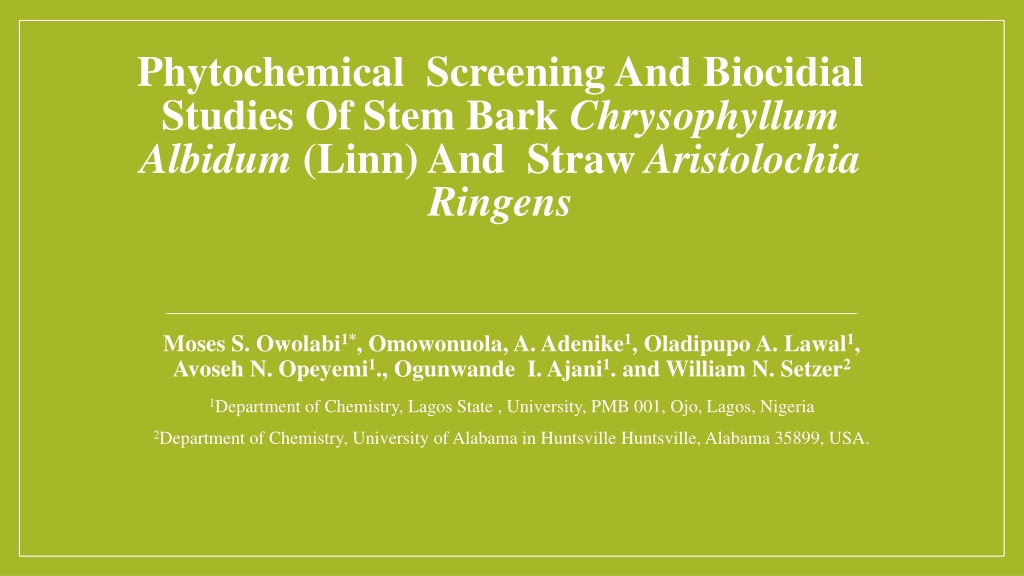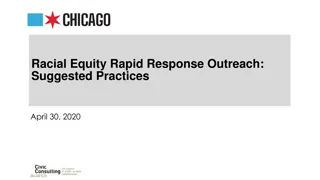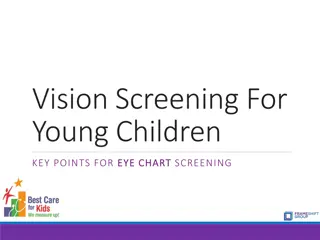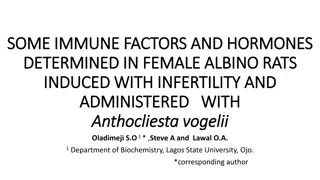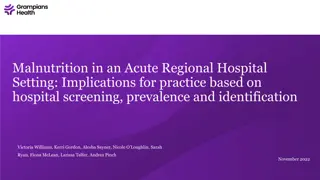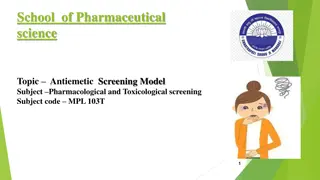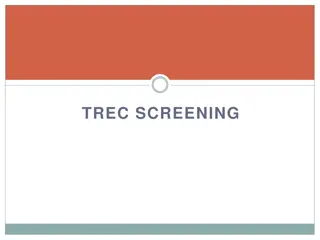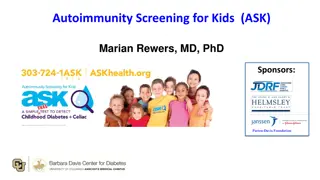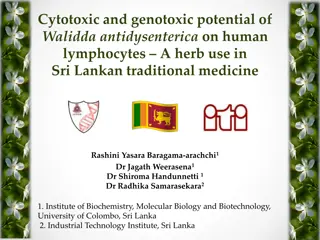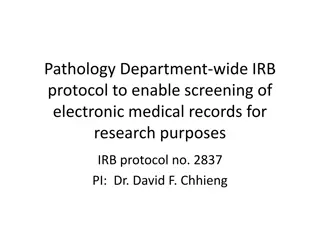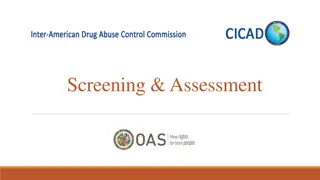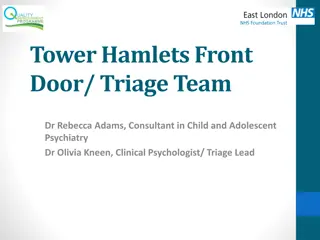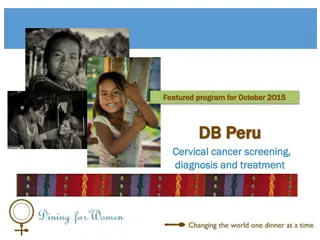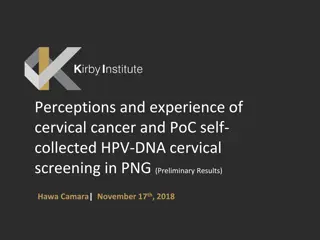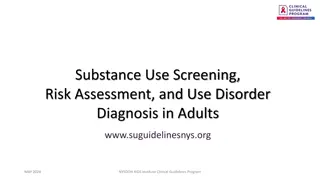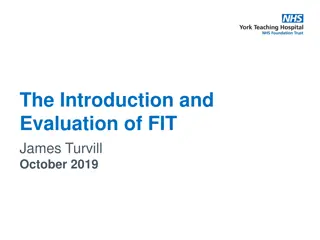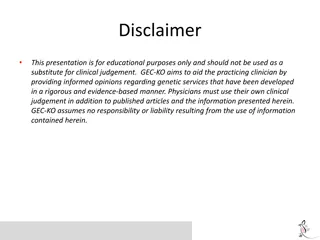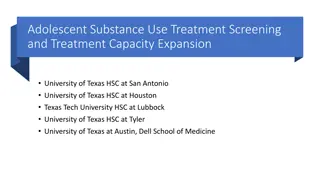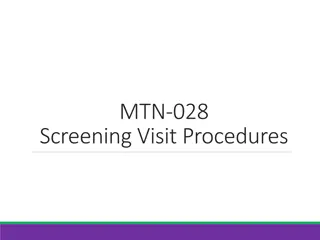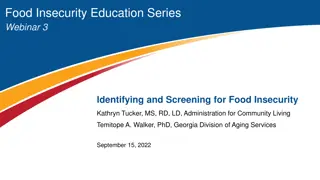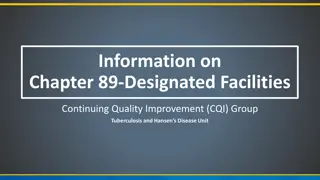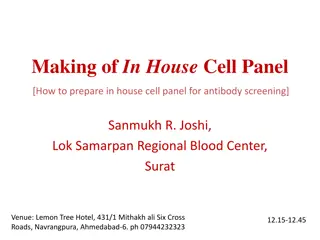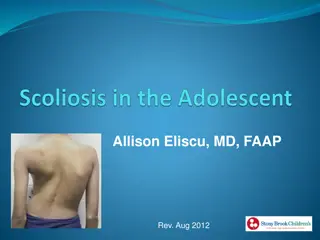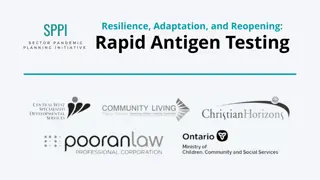Phytochemical Screening and Biocidal Studies of Chrysophyllum Albidum and Aristolochia Ringens
This study focuses on the phytochemical screening and biocidal properties of extracts from Chrysophyllum albidum (White Star Apple) and Aristolochia ringens. The research explores the medicinal potential of these plants, highlighting their traditional uses and scientific findings. Methods for plant preparation, phytochemical screening, and quantification of compounds are detailed. The investigation aims to contribute to understanding the therapeutic benefits of these natural sources.
- Phytochemical Screening
- Biocidal Studies
- Chrysophyllum Albidum
- Aristolochia Ringens
- Medicinal Plants
Download Presentation

Please find below an Image/Link to download the presentation.
The content on the website is provided AS IS for your information and personal use only. It may not be sold, licensed, or shared on other websites without obtaining consent from the author. Download presentation by click this link. If you encounter any issues during the download, it is possible that the publisher has removed the file from their server.
E N D
Presentation Transcript
Phytochemical Screening And Biocidial Studies Of Stem Bark Chrysophyllum Albidum (Linn) And Straw Aristolochia Ringens Moses S. Owolabi1*, Omowonuola, A. Adenike1, Oladipupo A. Lawal1, Avoseh N. Opeyemi1., Ogunwande I. Ajani1. and William N. Setzer2 1Department of Chemistry, Lagos State , University, PMB 001, Ojo, Lagos, Nigeria 2Department of Chemistry, University of Alabama in Huntsville Huntsville, Alabama 35899, USA.
OUTLINE Introduction Materials and Methods Results and Discussion Conclusion Acknowledgement References
Introduction Medicinal plants play a significant role in the health maintenance in under- developed countries, Extracts from herbs and spices continue to serve as a new sources for herbal medicines in all divisions of human population as folk medicines. Chrysophyllum albidum (Linn) commonly known as white star apple is a Tropical forest fruit tree belongs to the Sapotaceae family with about 800 species (Ehiagbonare et al, 2008) .Native toWest andcentralAfrica countries Locally the plant is named Agbalumo , (Yoruba) antimalaria and yellow fever concoction, as an emollient for skin eruption, treatment of stomach ache anddiarrhea (Idowu etal., 2006). been used traditionally as Studies have reported that seeds and roots extracts of C. albidium have demonstrated good antimicrobial, anti-inflammatory, anti-diarrheal and anti- hemorrhoidal properties (Okoli andOkere, 2010).
Chrysophyllum albidum Figure 1: The seeds, fruit and leaves of Chrysophyllum albium
Aristolochia ringens Vahl Aristolochia ringens Vahl, a native plant of Southern America, Brazil: commonly akogun in Yoruba, Aristolochia species are known to contain alkaloids Used for the treatment of obstetrics, snakebite venom, leprosy, and poisonous bites. Previous report shows high content of sesquiterpenoids characterised (E)-caryophyllene . The study aimed at ascertaining the phytochemical constituents, antimicrobial and cytotoxic activities of chloroform extracts of C. albidum and A. ringens as an ingredient in the production of herbal medicine growing inNigeria. a b Fig. 2 : Pictures of the leaves (a) and stem bark (b) of A. ringens Vahl
MATERIALS AND METHODS Plant preparation and extraction: Chrysophyllum albidum and Aristoclohia ringens Phytochemical screening :(Sofowora, 1993a,1993b,:Trease and Evans, 1989 and Harborne, 1973) methods with little modification. (Screening for alkaloids,flavonoids, phenols, tannins, anthraquinones, Cardiac Glycosides, Phlobatannins, Terpenoids and Steroids. Quantification of Phytochemicals Preparation of fat free sample: using diethylether Determination of total alkaloids using (Harborne, 1973) method : reagent (CH3 COOH /ethanol and NH3 ) Flavonoid determination by (Boham and Kocipai, 1974) method : reagent (CH3 OH )
Antimicrobial Screening The chloroform extract was screened for antimicrobial activity against Gram- positive bacteria( Bacillus cereus,Staphylococcus aureus, Staphylococcus epidermidis) Gram-negative bacteria, (Pseudomonas aeruginosa, Serratia marcescens and Escherichia coli ) Minimum inhibitory concentrations (MIC) were determined using the microbroth dilution technique (Satyal et al., (2012) in which the crude extract were prepared in cation-adjusted Mueller Hinton broth (CAMHB)and serially diluted in 96-well plates. Microorganisms were added to each well. Plate were incubated at 37oC for 24hr. . Gentamicin was used as a positive antibiotic control; DMSO was used as a negative control. Antifungal activity was determined as described above using Candida albicans in yeast-mold (YM). Amphotericin B was the positive control.
Cytotoxicity Test Hepatocarcinoma cell line of human being marked (HepG2, CRL-11997 ) Cells were grown in DMEM: F12 made up of L-glutamine and sodium bicarbonate, 10% of FBS, with 1% penicillin/streptomycin Once about 90% confluent is observed, the cells were risen with phosphate buffered saline and were suspended in a fresh complete media . 5 105 cells/well (100 L) were seeded in a 96-well plates and warmed for 24 hr to attach to the wall . Cells were treated with chloroform extracts at varying concentration for 72hrs. DMEM: F12 media was replaced by MTT assay (3-(4,5-dimethylthiazol-2-yl)-2,5-diphenyl tetrazolium bromide) and then DMSO. Absorbance was measured at 550 nanometer. All extracts were tested in triplicate. MCF-7 (human breast tumor marked ATCC No. HTB-22) cell About 80% cell growth was achieved after culturing of cells in a 96-well cell culture plates for 2 days. Growing medium, DMSO, and tingenone (100 g/mL) were used as negative and positive control compounds, respectively. Eight replicate solutions were added to wells. The percent kill ratios (% killcompound / % killcontrol) were determined and average absorbance, standard deviations were also calculated.
Results Table 1. Nature and yield of chloroform crude extracts from the C. albidum and A. ringens Plant Extract Extract Extract Texture Extract yield Percentages recovery (%) Dark Green Semi sticky powder 120.00 g 10.0 C. albidum Dark Brown Sticky semi solid powder 84.00 g 7.0 A. ringens Table 2. Qualitative analysis of secondary metabolites found in C. albidum and A. ringens Phenol Tannins Phlobatanin Alkaloid Flavonoid Steroid Terpenoids Anthraquinone Cardiac glycoside C. albidum - - - +++ ++ ++ + - - A. ringens - - - +++ ++ - + - + +++ = Test strongly positive ; ++ = Positive; + = Weakly positive; - = No effect Table 3. Quantitative analysis of the relative amount of secondary metabolites in C. albidum and A. ringens Phenol mg/100g - Tannins mg/100g - Alkaloid mg/100g 52.50 0.50 Flavonoid mg/100g 26.60 0.80 Cardiac glycoside mg/100g 27.10 0.80 C. albidum A. ringens - - 45.82 0.70 13.53 0.30 -
Antimicrobial and cytotocity Table 4. Antimicrobial activity (MIC, g/mL) of C. albidum and A. ringens Bacteria Bacteria Bacteria Bacteria Bacteria Bacteria Fungi Fungi Fungi Sample P. aerug E. coli S. aureus B. cereus S. epi S. mar A.niger Candida Botrytis C. albidum 312.5 < 19.5 2500 312.5 > 2500 > 2500 625 625 625 A. Ringens 625 > 2500 > 2500 < 19.5 > 2500 1250 625 156 625 Table 5. Cytotoxicity (IC50, g/mL) of the Chloroform Extracts of C. albidum and A. ringens Extract Hep-G2 MCF-7 A. ringens 16.4 1.8 81.6 12.8 C. albidum 23.1 4.8 > 100
Discussion The phytochemical screening revealed some differences in their Compositions, these differences imparts different physiological activities in the tested microorganisms , these support the idea that plant materials antimicrobial efficacy (Sofowora, 1993) The concerted synergistic or antagonistic activities of the phytochemicals could lead to antimicrobial activities (Felix, 1982; Kubmarawa et al., 2008) This could be attributed to the presence of alkaloid, flavonoids, cardiac glycosides, steroid and anthraquinone present in the chloroform extracts in the plant studied The pharmacological effect of the metabolites are; Alkaloid (Powerful anti-malaria agent ) Cardiac Glycosides (effective in congestive heart failure ) Aboaba, et al, 2006 Flavonoids (An antioxidant and lowers the risk of heart failure)
Conclusion TheMedicinal plants studied demonstrated the presence of secondary metabolites with good potential biological activities , support the idea that traditional medicines remain useful healthcare in developing countries. Further research work is ongoing towards bio-guided column chromatography and in-vivo studies of these plants.
Acknowledgment We are grateful to Elizabeth Jaiyeola for botanical identification and collection of Chrysophyllum albidum and Aristoclohia ringens, used in this study and also to W.N.S group for carrying out the biological experiments and analysing of the data.
References Aboaba, S.O., Smith, S.I., Olide, F.O., 2006. Antimicrobial effect of edibles plant extracts on escherichia coli 0157: H7 Pakistan. Journal of Nutrition. 5(4), 325-327. Boham, B.A., Kocipai, A.C., 1974. Flavonoids and Condensed Tannins from Leaves of Hawaiian Vaccinium Vaticulatum and V. Calycinium. Pacific Sci. (48) 458- 463. Kubmarawa, D., Khan, M.E., Punah, A. M., Hassan, M., 2008. Phytochemical Screening And Antimicrobial Efficiency Of Extracts From Khaya Senegalensis Against Human Pathogenic Bacteria. African Journal Of Biotechnology. 7(24), 4563-4566 Felix, M. T., 1982. Medicinal Microbiology. Churchill Livingstone Publishers, London. 7-8. Harbone, J.B., 1973. Phytochemical methods, London. Chapman and Hall, Ltd. 49-188. Akter, R.; Uddin, S. J.; Grice, I. D. 2014. Tiralongo, E. Cytotoxic activity screening of Bangladeshi medicinal plant extracts. Journal of Natural Medicines, 68, 246 252. Idowu, T.O., Iwalewa, E.O., Aderogba, M.A., Akinpelu, B.A., Ogundaini, A. O., 2006. Biochemical And Behavioural Effects Of Eleagnine From Chrysophyllum Albidum. J. Biol. Sci., (6) 1029-1034. Ehiagbonare, J.E., Onyibe, H.I., Okoegwale, E.E., 2008. Studies On The Isolation Of Normal And Abnormal Seedlings Of Chrysophyllum Albidum: A Step Towards Sustainable Management of The Taxon In The 21st Century. Sci. Res Essay. 3(12), 567-570.
